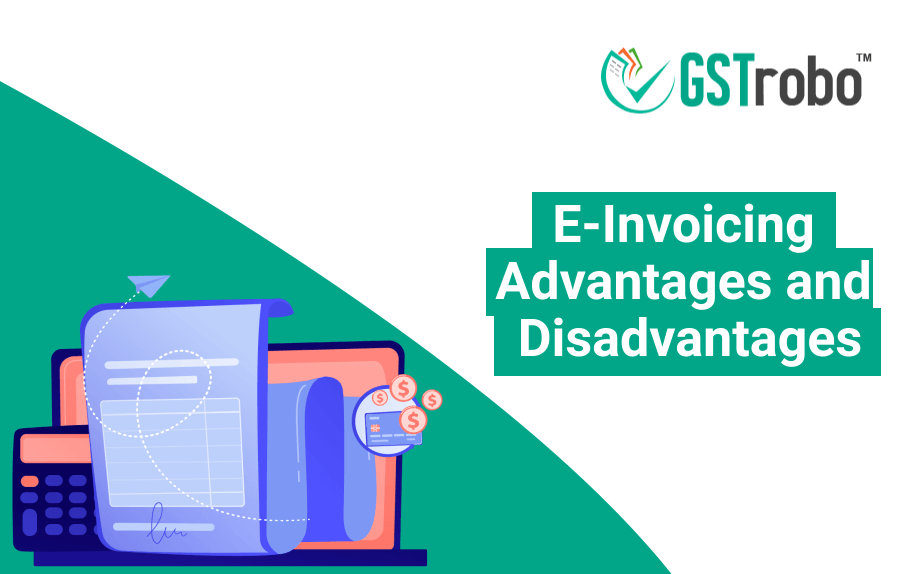E-Invoicing – Advantages and Disadvantages
We already know everything that has advantages has some disadvantages same as with the newly implemented e-invoicing system in India. So, in this blog, we will cover all the advantages and disadvantages related to e-invoicing.

Introduction of E-Invoicing System in India
CBIC has been implementing an e-invoicing system in phases. E-invoicing was first introduced to all the large taxpayers dealing in B2B and export supplies and whose aggregate turnover was INR 500 Crores.
Further, in January 2021, all those taxpayers whose aggregate turnover exceeds INR 100 Crores need to mandatorily follow the provisions of e-invoicing.
Recently, CBIC has notified all those taxpayers whose aggregate turnover exceeds INR 20 Crores to mandatorily to follow the new e-invoicing process from April 1, 2022.
It shall be further noted that certain businesses are exempt from this e-invoicing mandate such as airlines, banks, armed forces, insurance companies, and telecom service providers.
Advantages and Disadvantages of E-Invoicing
We have listed all the possible advantages and disadvantages of e-invoices underneath.
Advantages of E-Invoicing
- Under this new e-invoicing, it is easier to share e-invoices as they are inter-operable due to the standardized format.
- Once an invoice is transferred to the Invoice Registration Portal (IRP), the details of such an invoice are shared with the GST and e-Way Bill portal. Because of this, details in GST returns and e-way bill form gets auto-drafted.
- E-invoicing reduces errors as the data gets auto-filled in GST returns and e-way bill the scope of errors is eliminated to a great extent that used to take place due to human intervention.
- Real-time reporting of e-invoices reduces the scope of tax evasion as the supplier cannot raise fake GST invoices.
- E-invoicing permits faster accessibility of Input tax credits (ITC) as now it is easier to reconcile Input Tax Credit (ITC) available and output tax liability.
- E-invoicing helps in the reduction of tax evasion incidents as the details of invoices can easily be tracked by the taxpayers. In simple words, taxpayers can track the e-invoices on a real-time basis
- The need for giving invoices in multiple departments such as finance (for filing GST Returns) and logistics (for e-way bill generation) is eliminated.
- The recipient can easily reconcile his purchase order with the e-invoice issued and based on the same he/she can accept or reject it in real-time.
- Under the new e-invoicing system, the taxpayer needs to compulsorily share the signed QR code and Invoice Reference Number (IRN) with the recipient. This helps the tax authorities and recipient to check the authenticity of an invoice even through a handheld device or phone/phablets.
- Using Signed QR code help taxpayers in generating n number of e-invoice copies as it can be scanned easily by phones.
Disadvantages of E-Invoicing
Till now, e-invoicing has proved to be a major change under GST. However, there are some disadvantages of e-invoicing system:
- The current e-invoicing system only includes B2B and export supplies, invoices issued to the end consumers are exempt.
- Incidences of fraud are still there in the case of B2C invoices as there is no input tax credit (ITC) is involved.
- In addition, the taxpayer cannot store e-invoices in the IRP for more than 24 hours. However, to store e-invoice data you can use this e-invoicing software.
How Can GSTrobo® Help you?
GSTrobo® a division of Binary Semantics is one of the leading ASP- GSP who provides industry-leading GST compliance software such as GST, e-way bill, and e-invoicing software. These solutions not only seamlessly integrate with all the ERPs but also automates most of your GST compliance.
